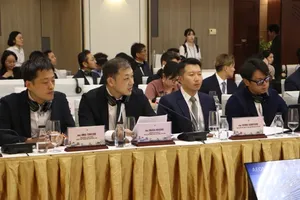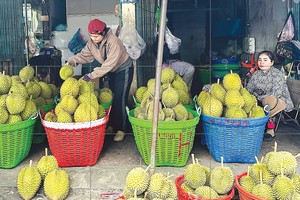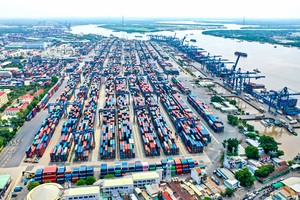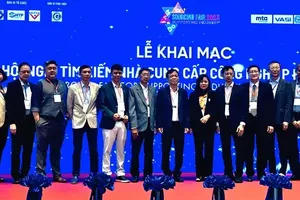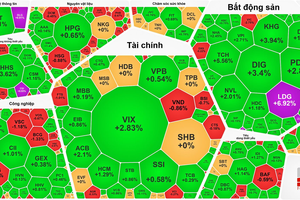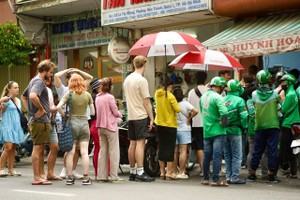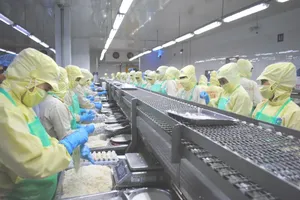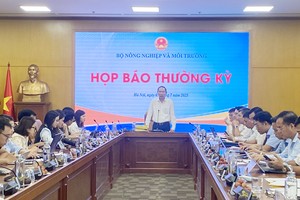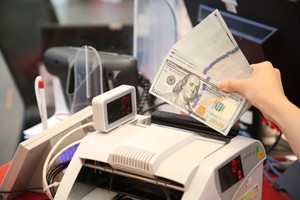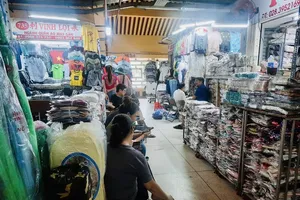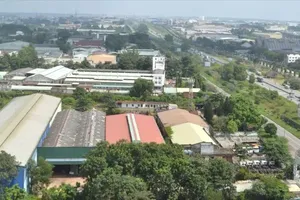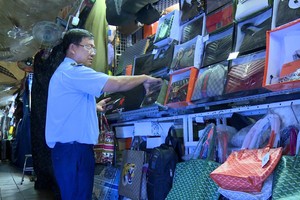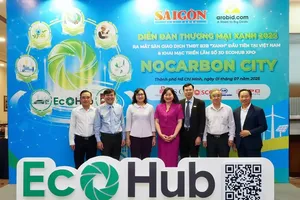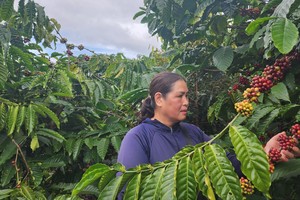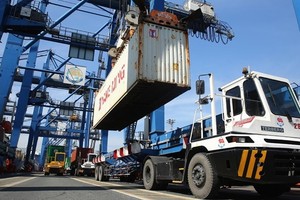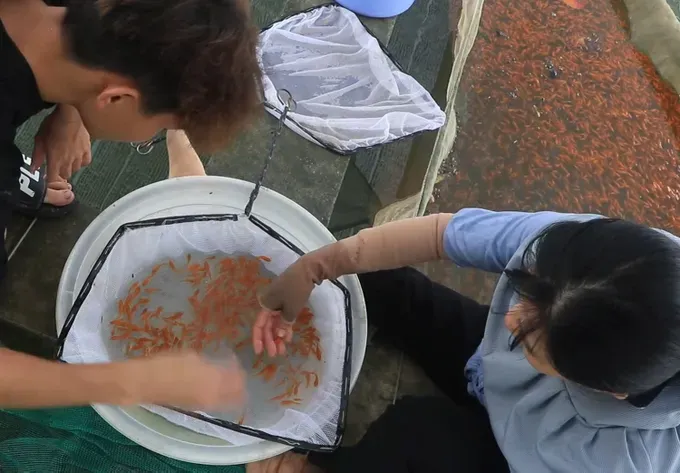
Despite being the epicenter of the southern key economic region, with its breakneck urbanization and explosive industrial growth, the agricultural sectors of HCMC and the former territories of Binh Duong and Ba Ria-Vung Tau have continued to reap encouragingly sweet rewards.
66-year-old Doan Thanh Tuong, a mango grower in Can Gio Commune, shared that his family has significantly reduced fertilizer and pesticide use in recent years, instead cultivating his orchard according to VietGAP standards. Leveraging the abundant alluvial water, he installed an automatic irrigation system. This, combined with a favorable climate and soil enriched by both saltwater and river silt, yields large, glossy mangoes.
From his 5,000m² orchard, he harvests about 4 tonnes annually, earning an average profit of VND350 million (approximately US$13,750) and has been named a “City-level Excellent Production and Business Farmer” for many consecutive years. He has also successfully encouraged 37 neighboring households to adopt the VietGAP model.
In the bustling urban ward of Long Binh, Nguyen Thi Thanh Thuy has built a successful ornamental flower business with an annual revenue of nearly VND4 billion ($157,000). She started in 2003, coinciding with Vietnam’s hosting of the 23rd SEA Games, when she recognized the immense market for decorative flowers. From just a few small flowerbeds, her operation has blossomed into a 20,000m² garden producing over 50,000 plants, supplying decorative projects across the eastern and southwestern regions.
In Hoa Hoi Commune, Director Lam Ngoc Nham of Bau May Agriculture-Commerce-Tourism JSC was a high-tech agriculture pioneer in the former Ba Ria-Vung Tau Province. His company cultivates a 15-hectare model that intercrops pepper with medicinal yams, generating a total income of about VND4 billion (approximately $157,000) per hectare annually.
Beyond selling raw materials, the company processes and markets 30 value-added products from seedless pepper and Chinese yam, both domestically and internationally. Director Nham also partners with local farmers to cultivate 1,700 hectares of Bau May pepper organically and integrates agritourism, attracting thousands of visitors each year for a unique in-orchard dining experience.
Formerly Bach Dang Commune, Tan Uyen Ward now stands as a green oasis amidst industrial zones. Located nearly 30km from central HCMC, it retains a tranquil charm with lush pomelo orchards, red-tiled roofs, and clean village lanes.
As Director Nguyen Huu Tam of the Bach Dang Pomelo Cooperative explained, residents here preserve not only their pomelo trees but also their community spirit and the relaxed, gentle culture of the region. Intriguingly, the locality is evolving into a “smart village”, applying digital technology to tourism, implementing energy-saving lighting, and providing free Wi-Fi along its main roads. Local farmers are receiving digital skills training, using apps to monitor crops and sell their produce online.
These examples clearly demonstrate a trend of rural development that eschews one-dimensional urbanization in favor of ecological balance and high-tech applications. This success stems from the farmers’ determination with the guiding hand of the government.
Secretary Nguyen Ngoc Xuan of the Binh Khanh Commune Party Committee noted that Can Gio region has 219 hectares of mango cultivation. In 2024, production hit 2,400 tonnes, with prices ranging from VND65,000-90,000 per kilogram ($2.5-3.5), yielding profits of VND600-700 million ($23,000-26.800) per hectare.
Can Gio’s mangoes have achieved a 4-star OCOP product certification, and the government is now assisting farmers in obtaining official production area codes for export. High technology is also being vigorously applied in other specialized cultivation areas like An Nhon Tay, Binh Loi, and Long Truong.
Deputy Director Vo Thanh Giau of the HCMC Department of Agriculture and Environment stated that the city’s urban agriculture has prospered thanks to its abundant land and water resources from a dense network of rivers and canals, especially the Dong Nai, Be, and Saigon rivers. He believes these advantages will be magnified now that Binh Duong and Ba Ria-Vung Tau are “joining HCMC”, which offers a vast consumer market and advanced science and technology.
The department is implementing Resolution No.57-NQ/TW by the Politburo on scientific-technological breakthroughs, innovation, and national digital transformation to help farmers build strong brands, establish production area codes, ensure product traceability, and expand into international markets.
“With this synergy, the megacity’s agricultural economy will grow even stronger, becoming a spearhead for high-quality production”, Deputy Director Vo Thanh Giau affirmed.
Echoing this optimism, Vice Chairman Nguyen Van Phung of the Vietnam Ornamental Creatures Association sees vast potential for eco-tourism linked with farms and plant nurseries. He noted that improving transportation infrastructure will facilitate the exchange of ornamental products, expanding markets and supply chains, and creating more wealth for farmers.
According to the Department of Agriculture and Environment, as of July 2025, HCMC has over 900 high-tech agricultural establishments, primarily in crop production, livestock farming, and breeding stock supply. Nearly 90 percent of the labor force in these establishments is formally trained.
These designated high-tech zones receive priority investment in infrastructure, production technology support, and brand building, including participation in the OCOP program. With many preferential policies, the agricultural sector has made a definite contribution to the city’s economic development.
